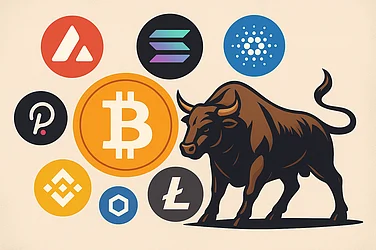The Gaming & NFTs ecosystem is changing at a pace never before, transforming the way players engage with digital assets, ownership, and game economies. Secondary markets—places where users can purchase, sell, and trade digital assets after they have been sold for the first time—are among the forces driving this revolution.
These secondary markets are not just about reselling digital commodities; they signify a paradigm shift in how gamers value their time, creativity, and investment. Whether they are selling an unusual skin of a well-known game or trading collectible NFT playing cards, secondary markets are the lifeblood of the Gaming & NFTs ecosystem.
Let's dive into how these markets work, their advantages and disadvantages, and why they're at the center of the future of gaming.
What Are Secondary Markets?
Simply put, secondary markets are where pre-existing assets purchased in advance are exchanged or resold among users.
In Gaming & NFTs, secondary markets enable gamers and collectors to:
Resell game items, weapons, skins, or collectibles.
Sell NFTs acquired or won by games.
Extract real-world worth from virtual property.
This builds a player economy, instead of conventional gaming platforms where everything is managed by the developers and ownership is transitory.
How Secondary Markets Fuel Gaming & NFTs
The explosion in Gaming & NFTs was accompanied by open, physical, and transferable ownership-based worlds.
The revolution is fueled by secondary markets because:
1. Enabling True Ownership
Joint ownership of a game is with the game developers.
NFTs make game players owners of assets within a game and thus entitled to sell them in secondary markets at their discretion.
2. Creating Real-World Value
Game assets are turned into real-world economic value.
Players trade unique NFT-related items, weapons, or skins for cryptocurrency or money.
3. Encouraging Player Engagement
Players play increasingly with each tradable in-game achievement of game goods and services.
It encourages loyalty, creativity, and multiplayer activity.
4. Encouraging Game Longevity
Games increase in popularity years down the line with economically trading populations.
The secondary market keeps games of the past alive by building economic momentum.
Advantages of Secondary Markets for Gaming & NFTs
Increased Player Freedom: The assets could be transferred from one platform to another or resold as one wishes.
Financial Freedom: Recreational gamers also gain the chance of making money from trading and gaming.
New Business Models Emerge: The creators receive paid royalties upon every resale of an NFT.
Transparency and Safety: Blockchain ledger provides authenticity and proof against copies.
Issues Confronting Secondary Markets
Although they hold promise, secondary markets also have a host of issues that must be resolved:
Regulatory Uncertainty
Far too much is left to individual nations to determine how to tax and regulate NFTs and virtual assets.
Fraud and Scams
User trust can be exploited through phishing scams, fake assets, and fake NFTs.
Volatility in Value
The value of in-game NFTs can fluctuate vastly, creating speculative bubbles.
Interoperability Issues
Various gaming worlds can be incompatible with all NFTs, hence the reduced trading value.
Environmental Issues
There are certain blockchain networks that are extremely power-hungry, but environmentally friendly solutions are on the rise.
The Future of Secondary Gaming & NFT Markets
As blockchain tech comes of age, secondary markets are getting smoother, more user-friendly, and player-focused.
The most thrilling future developments are:
Cross-Game Trading: A future where NFTs circulate freely across games.
Dynamic Royalties: Creators earning sustained income from secondary sales.
AI-Powered Marketplaces: Intelligent platforms predicting item value and player demand.
Sustainable Blockchain Models: Energy-efficient systems powering environmentally friendly gaming economies.
With such developments, secondary markets would reshape Gaming & NFTs' economic landscape, bringing entertainment, investment, and innovation together within a single ecosystem.
Key Takeaways
Secondary markets bridge virtual gameplay with real-world economics.
They provide gamers with ownership, financial value, and creative freedom.
The marriage of Gaming & NFTs will propel new digital entrepreneurship even further.
But regulation, security, and interoperability remain the key to sustainability.
FAQs About Secondary Markets in Gaming & NFTs
1. What is a secondary market, in Gaming & NFTs?
A secondary market allows users to resell or retrade NFT-gaming-based assets after the first sale, providing players with financial ownership of their virtual items.
2. How are secondary markets useful to players?
Players receive compensation for their achievements, can sell one-of-a-kind items for money, and build items of value in the real world.
3. Are all gaming NFTs tradable on secondary markets?
Not exactly. NFTs are game-specific or constrained by platform policy, but with growing standards on blockchains, interoperability is improving.
4. What are the risks of secondary markets?
They are susceptible to scams, market volatility, and unclear regulations. Use established platforms and know about asset ownership regulations.
5. Will secondary markets redefine the gaming future?
No doubt. They're turning gaming from a consumption economy to a participatory economy, and everyone's better off—gamers and game developers alike.
Conclusion
Secondary markets are quite possibly the biggest development in gaming right now. They've turned Gaming & NFTs into habitable digital economies—where gamers can trade, earn, and survive long after the game. As technology progresses, these markets will continue to bring business and leisure closer together, and usher in a new age of digital ownership and creative freedom. The only question now is no longer if secondary markets will change gaming—it's when they'll go mainstream.





















